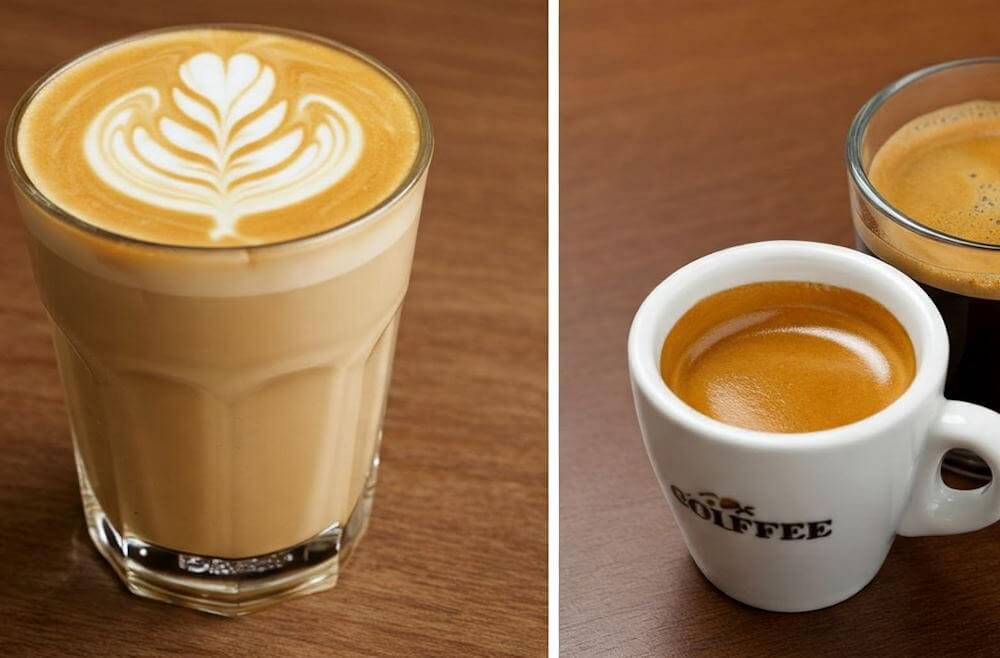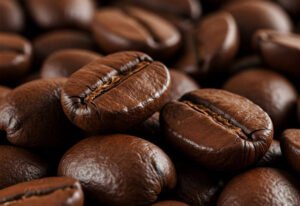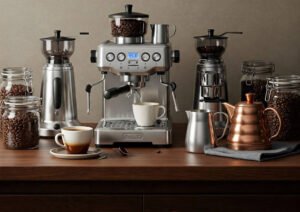Introduction to Coffee Culture
Coffee has played a significant role in human society for centuries, evolving from a simple beverage into a complex cultural phenomenon. Its origins can be traced back to the ancient coffee forests of Ethiopia, where legend tells of a goat herder named Kaldi who discovered the energizing effects of coffee beans after noticing his goats were unusually lively. From Ethiopia, coffee spread to the Arabian Peninsula, and the first coffeehouses known as qahveh khaneh began emerging in the Middle East during the 15th century. These establishments became crucial social hubs where people gathered to enjoy a cup of coffee while engaging in conversation, playing games, and discussing ideas, thus establishing coffee’s role as a social catalyst.
As coffee traveled across continents through trade routes, it underwent various transformations dependent on cultural influences, leading to the development of unique brewing methods and drinking rituals. From the ornate coffee ceremonies of Ethiopia to the espresso bars of Italy, each region has imbued coffee with its own identity. This diversity reflects not just culinary preference but also deeper social narratives surrounding community, hospitality, and identity.
Throughout history, coffee has continued to reflect societal changes, adapting to modern tastes and customs. In many cultures, the act of brewing and enjoying coffee is not just a means of consuming a caffeinated beverage; it is a ritual that fosters communal bonds and enhances daily life. The emergence of specialty coffee and artisanal brewing techniques in recent years has further underscored coffee’s evolution into a refined art form, where enthusiasts appreciate the nuances of flavor, aroma, and brewing methods.
As we delve into the classic coffee drinks that have stood the test of time, it is essential to appreciate the rich tapestry of coffee culture that surrounds these beloved beverages. Each drink embodies not just a distinct flavor profile but also a story of cultural significance and human connection.
Espresso: The Heart of Coffee
Espresso is often regarded as the cornerstone of the coffee world, revered for its bold flavor and rich aroma. Originating in Italy in the early 20th century, the process of making espresso revolutionized how coffee was consumed, transitioning it from a simple brewed beverage to a highly skilled craft. The espresso machine, a fundamental piece of equipment, utilizes high pressure to extract concentrated coffee, producing a small, robust shot that serves as the base for numerous coffee drinks.
To achieve the perfect espresso, several factors must be taken into account. The grind size of coffee beans is crucial; a fine grind allows water to flow through the coffee grounds at an optimal rate, ensuring a full and rich extraction. If the grind is too coarse, the water will pass through too quickly, leading to a weak shot. Conversely, an overly fine grind can result in an over-extracted espresso that tastes bitter. Therefore, mastering grind size is essential for crafting a desirable espresso.
Tamping, or compressing the coffee grounds in the portafilter, is equally important. Applying consistent pressure during tamping ensures that the water flows evenly through the coffee, preventing channeling and creating a balanced shot. Baristas often develop their unique tamping techniques to refine their espresso, highlighting personal skill and expertise in the art of coffee preparation.
Espresso’s significance extends beyond its standalone shot; it serves as the foundation for various popular coffee beverages, including lattes, cappuccinos, and macchiatos. Each of these drinks builds upon the robust flavors of espresso, combining it with varying amounts of steamed milk, foam, or flavorings, thus creating a rich tapestry of taste experiences. In essence, espresso is not just a drink but a vital component of many beloved coffee beverages, making it an essential experience for any coffee lover.
Cappuccino: A Perfect Trio
The cappuccino is a classic coffee drink that has won the hearts of coffee enthusiasts worldwide. Originating from Italy, this beloved beverage consists of a harmonious balance between three main components: robust espresso, velvety steamed milk, and luscious milk foam. The traditional ratio of these elements is one-third espresso, one-third steamed milk, and one-third milk foam, allowing for a delightful fusion that is both rich in flavor and texture. The secret to an exquisite cappuccino lies in the precision of these proportions, as well as the quality of each ingredient used.
A cappuccino’s history can be traced back to the early 1900s, when espresso machines first became popular in Italy. The name “cappuccino” is derived from the Capuchin friars, whose brown robes were reminiscent of the drink’s color when mixed with frothed milk. This drink was initially enjoyed as a luxurious treat due to the intricate brewing process and the delicate art of frothing milk. Over the years, cappuccino has evolved, inspiring many regional variations across the globe, such as the Viennese cappuccino, which incorporates whipped cream, and the Spanish “café con leche,” boasting a stronger milk presence.
To craft the perfect cappuccino, it is essential to achieve that iconic frothy top. A key technique involves steaming the milk to around 150°F (65°C) and incorporating microfoam, which forms when air is introduced during steaming. This airy texture creates a visually appealing layer, with a contrast that complements the rich espresso beneath. For those looking to personalize their experience, flavor variations can be achieved by adding spices such as cinnamon or nutmeg, or even flavored syrups that suit individual tastes. Embracing the tradition surrounding this classic drink can enhance one’s appreciation for the artistry of coffee-making.
Latte: Smooth and Creamy Bliss
The latte stands out as one of the most cherished coffee drinks among enthusiasts, renowned for its smooth and creamy texture. This delightful beverage is crafted by combining a shot of espresso with steamed milk, yielding a velvety concoction that appeals to a wide array of palates. A classic latte typically comprises one part espresso to three parts steamed milk, resulting in a balanced flavor that highlights the richness of the coffee while providing a subtle sweetness from the milk.
Creating a traditional latte at home begins with carefully brewing a robust shot of espresso. Following this, the key component is the milk, which should be steamed to an ideal temperature of around 150°F to 155°F (65°C to 68°C). Frothing the milk introduces tiny air bubbles, contributing to the creamy mouthfeel that makes the latte so enjoyable. When done correctly, the frothed milk can be poured over the espresso to achieve a beautifully layered drink.
For those looking to elevate their latte experience, flavor variations abound. Baristas often enhance lattes by incorporating flavored syrups, such as vanilla, caramel, or hazelnut, allowing coffee lovers to personalize their drinks to their liking. Additionally, milk alternatives, such as almond milk, soy milk, or oat milk, have gained popularity, catering to diverse dietary preferences and creating unique taste profiles.
Latte art, an aesthetically pleasing aspect of coffee culture, is another delightful feature of this drink. The process involves pouring steamed milk over espresso in a way that creates intricate designs such as hearts or rosettas on the surface. With practice, anyone can learn to master latte art, adding an artistic touch to their beverage that makes each sip even more enjoyable.
Flat White: A Balanced Delight
The flat white has become an iconic beverage among coffee enthusiasts, originating from the vibrant coffee cultures of Australia and New Zealand. This distinctive drink features a robust espresso base complemented by velvety microfoam milk, creating a harmonious balance between strong coffee flavor and a creamy texture. Unlike the cappuccino, which typically contains more foam, or the latte, which features a larger proportion of milk, the flat white offers a unique composition that allows the character of the coffee to shine through.
Preparation techniques play a crucial role in crafting the perfect flat white. Baristas start by pulling a shot of espresso, which serves as the drink’s foundation. The key ingredient, microfoam, is created by steaming milk to a velvety consistency with fine bubbles, resulting in a rich and glossy texture. This microfoam is then poured over the espresso in a manner that keeps the layers distinct while providing a beautiful latte art finish. The ideal flat white typically features a 1:3 ratio of espresso to milk, ensuring that the intense flavors of the coffee aren’t overwhelmed by the creaminess of the milk.
The flat white has gained a devoted following due to its balance and flavor profile. For those who appreciate a strong coffee experience without excessive sweetness or milkiness, this drink serves as an ideal choice. Coffee lovers are drawn to the flat white not only for its taste but also for the craftsmanship involved in its preparation. As coffee culture continues to evolve, the flat white remains a staple in cafes around the globe, showcasing the artistry and expertise of skilled baristas. It embodies the spirit of modern coffee trends while honoring its rich heritage, making it a must-try for anyone looking to explore classic coffee drinks.
Mocha: Chocolate Lovers’ Dream
The mocha, often regarded as a chocolate lover’s dream, is a delightful coffee drink that harmoniously combines rich espresso, velvety steamed milk, and decadent chocolate syrup. Its origins can be traced back to the city of Mocha in Yemen, recognized for its coffee trade and chocolate-like coffee beans. Over the centuries, this drink evolved, gaining popularity among enthusiasts who sought a sweeter alternative to traditional coffee. The mocha not only satisfies caffeine cravings but also indulges those with a penchant for chocolate.
Over the years, numerous iterations of the mocha have emerged, enabling coffee lovers to customize their experience. The classic mocha features a shot of espresso mixed with steamed milk and a generous swirl of chocolate syrup, typically topped with whipped cream and a sprinkle of cocoa powder or chocolate shavings. The resulting concoction is a rich blend that offers the stimulating qualities of caffeine and the comforting sweetness of chocolate.
Creating a delicious mocha at home is a straightforward process that allows for personalization. To begin, brew a shot of high-quality espresso. If you do not have an espresso machine, a strong coffee brewed in a French press can be an effective substitute. Next, heat the milk until it reaches a steaming point and froth it to create a creamy texture. In a separate cup, combine the espresso with chocolate syrup, adjusting the amount to your taste. Finally, pour the steamed milk over the espresso mixture and top with whipped cream for added decadence.
For those seeking variety, the white chocolate mocha offers a lighter twist, utilizing white chocolate syrup instead of traditional chocolate. Additionally, vegan options can be explored by substituting dairy milk with almond, soy, or oat milk, ensuring that anyone can enjoy this delightful beverage. Embracing the mocha, with its delightful balance of flavors, is a surefire way to enhance any coffee experience.
Conclusion: The Joy of Exploration
As we have journeyed through the five classic coffee drinks every enthusiast should try, it becomes evident that each beverage offers a unique experience that goes beyond mere taste. Coffee culture is rich with tradition, creativity, and endless variations, allowing for an exploration that caters to a multitude of preferences. Whether one opts for the boldness of an espresso, the comforting allure of a cappuccino, or the delicate balance of a flat white, the world of coffee promises a delight that transcends the daily routine.
Making these iconic drinks at home can be an engaging and satisfying experience. By experimenting with different brewing techniques and ingredient variations, individuals can discover their ideal flavor profiles. The joy lies not only in the consumption but also in the process of crafting each cup, allowing coffee lovers to develop their skills and deepen their appreciation for the beverage. It is encouraged to embrace the art of home brewing, as each attempt can offer new insights into personal tastes and preferences.
In addition to home experimentation, visiting local coffee shops can further enhance this exploration. Each establishment brings its interpretation of classic coffee drinks, often incorporating unique local flavors or innovative techniques that reflect their individual character. Engaging with baristas and fellow coffee aficionados can provide valuable insights and spark inspiration for new concoctions to try. By immersing oneself in the diverse landscape of coffee, one can experience the communal joy of coffee culture and connect with others who share a similar passion.
Ultimately, the exploration of classic coffee drinks embodies a journey filled with personal discovery. Each cup serves as a reminder of coffee’s ability to bring people together and create lasting connections. Therefore, as you venture into this delightful world, seize the opportunity to taste, compare, and find your favorites among these classic options.
Tips for Brewing the Perfect Coffee
Brewing the perfect cup of coffee at home requires attention to several key factors, including equipment, coffee bean selection, water quality, and brewing methods. To achieve an exceptional flavor, it is essential to start with high-quality coffee beans. Look for freshly roasted beans that match your personal taste preferences, whether you favor a dark roast with bold flavors or a light roast that highlights delicate notes. Coffee beans should ideally be used within two weeks of roasting to ensure maximum freshness.
When it comes to equipment, investing in a good coffee grinder is crucial. Burr grinders are typically recommended over blade grinders as they provide a consistent grind size, which is vital for optimal extraction. The grind size should match your chosen brewing method; for instance, a coarse grind is ideal for French press, while a fine grind is more suitable for espresso machines. Additionally, choose a brewing device that aligns with your desired coffee experience, whether it be a drip coffee maker, pour-over, or espresso machine.
Another factor that can greatly influence the taste of your coffee is the quality of water used in the brewing process. It is advisable to use filtered water, as tap water can contain impurities that may affect the coffee’s flavor. The water temperature should ideally be between 195°F and 205°F, as water that is too hot can lead to over-extraction, resulting in a bitter taste. In contrast, water that is too cool can cause under-extraction, resulting in a weak flavor.
Lastly, proper storage of coffee beans plays a significant role in maintaining their freshness. Store coffee beans in an airtight container, away from light, heat, and moisture, which can deteriorate the quality over time. By following these tips and techniques, you can enhance your coffee brewing skills and enjoy a delicious cup every time.
Pairing Coffee Drinks with Food
Enhancing the enjoyment of classic coffee drinks can be achieved through thoughtful food pairings that complement and elevate the flavors of each beverage. For espresso, a strong and bold coffee, pairing it with a rich chocolate croissant or a biscotti infused with almonds can provide a delightful textural contrast and a burst of flavor. The bitterness of the espresso melds beautifully with the sweetness of the pastry, creating a harmonious experience.
When considering cappuccino, which features velvety milk foam, savory breakfast items like eggs benedict or a smoked salmon bagel can serve as excellent companions. The creaminess of the cappuccino harmonizes with the richness of the hollandaise sauce or the smoky flavor of the salmon, resulting in a balanced and satisfying breakfast.
For a latte, known for its smooth and creamy profile, sweeter options such as pancakes, waffles, or a slice of vanilla cake are ideal. The subtle sweetness of these dishes enhances the milky flavor of the latte, making each sip more enjoyable. Adding fruit, such as berries or bananas, can bring a refreshing contrast and brightness, enhancing the overall taste experience.
Flat whites, with their velvety texture and strong coffee flavor, pair well with a simple yet delicious avocado toast. The creaminess of the avocado complements the flat white’s smoothness while adding a layer of freshness to the pairing. Additionally, incorporating spices like chili flakes can introduce a surprising kick that rounds out the flavors.
Lastly, the mocha, a coffee drink infused with chocolate, is best enjoyed alongside rich desserts, such as a chocolate lava cake or a fudge brownie. The combination of chocolate in both the beverage and food creates an indulgent treat that appeals to chocolate lovers and enhances the mocha’s inherent sweetness and complexity.
Explore Further: Coffee Resources
For those who are enthusiastic about diving deeper into the captivating world of coffee, an abundance of resources awaits. Whether you are seeking to refine your brewing techniques, explore different coffee cultures, or simply enjoy literature surrounding this beloved beverage, the following curated list of resources is invaluable.
To begin with, the world of coffee literature is rich and diverse. A highly recommended book is “The World Atlas of Coffee” by James Hoffmann, which offers insights into coffee growing regions, processing methods, and brewing techniques. Another noteworthy read is “Coffee: A Comprehensive Guide to the Entire Coffee Bean Spectrum” by Kalle Freese, which provides an engaging overview of coffee’s journey from bean to cup. These books not only enhance your knowledge but also instill a greater appreciation of the complexities involved in every sip.
Websites dedicated to coffee enthusiasts can also serve as a treasure trove of information. Sites such as Home-Barista provide forums and discussions focused on brewing techniques, equipment reviews, and coffee tastings. Additionally, Coffee Review offers comprehensive reviews of various coffee beans and blends, helping consumers make informed choices while exploring new flavors.
For those who prefer a social media approach, numerous accounts on platforms like Instagram and Twitter celebrate coffee culture. Following accounts such as @baristamagazine and @iamcoffeeguru can provide daily inspiration, tips, and a sense of community among fellow coffee lovers. Engaging with these resources will undeniably enhance your coffee journey, allowing you to appreciate every nuanced flavor and tradition that this beverage has to offer.
Through these books, websites, and social media connections, you can cultivate a more profound understanding of coffee, making your experience even more rewarding. From learning about brewing methods to exploring coffee-related events, these resources are essential for any coffee enthusiast eager to expand their horizons.





